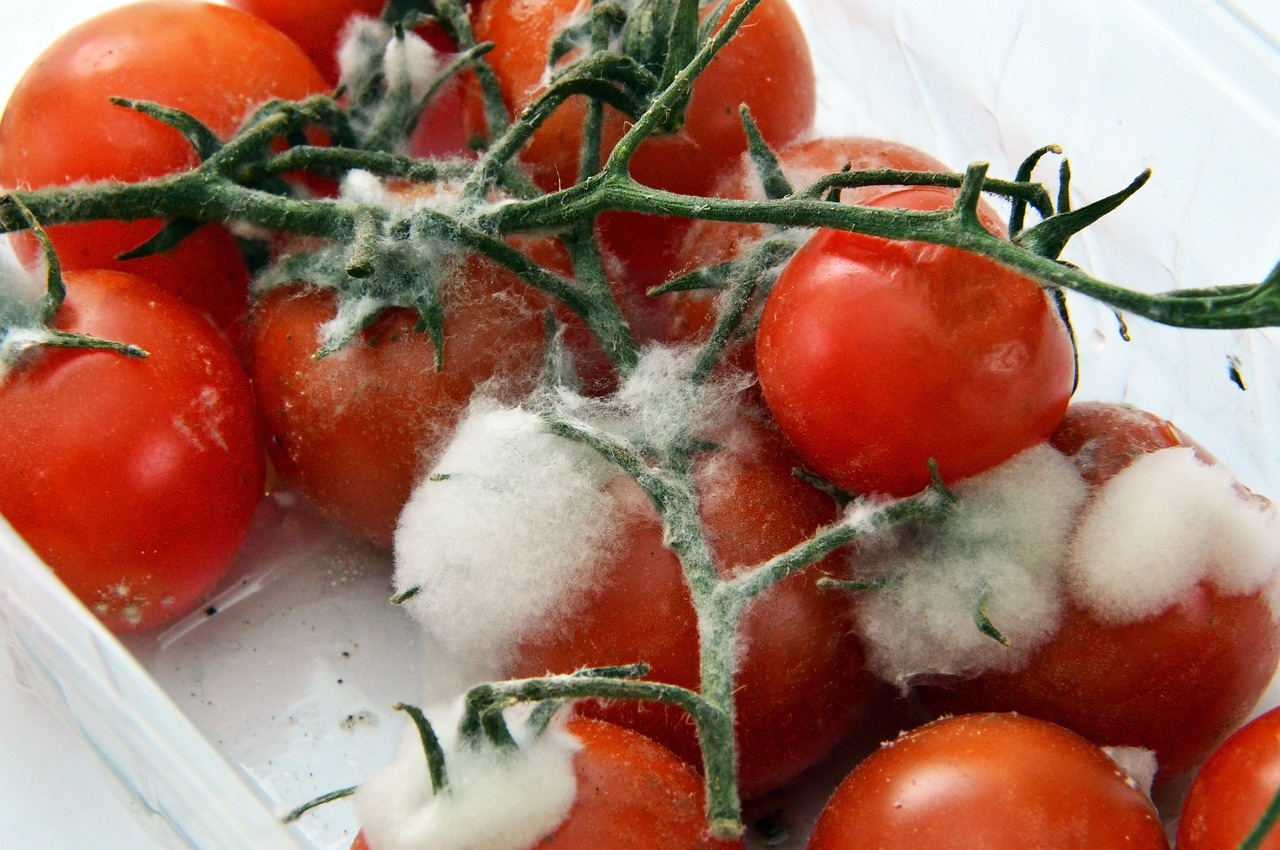When do tomatoes go bad? There could be several reasons why your tomato plants have gone bad. Maybe you used the wrong pot size, you’ve underwatered or overwatered your plants, you planted them in the wrong type of soil, they received inadequate nutrition, or they contracted airborne diseases.
As a result, your tomato plants may not set fruit, the leaves may start to wilt, or your tomatoes turn out ugly and uneatable. These symptoms could be an underlying issue that can eventually kill your plants. With that said, here are four signs that your tomato plant has gone bad and what you can do about it:

Fruit Cracks
If you notice cracks from the base of your ripe tomato fruit, this can be an indication of fruit cracks. When this happens, your tomato plants become susceptible to animals and insects that want to eat the fruit.
One of the main causes of fruit crack is the weather. If your tomatoes experience a long, dry spell, they become thirsty. When heavy rainfall comes, your plants will take up water fast, causing the fruit to enlarge and eventually crack.
Even though you can’t control the weather, you’ll be able to control the growing environment of your tomatoes by placing them inside a mini greenhouse. This prevents your plants from being exposed to unpredictable weather, keeping them safe and healthy.
Sunscald
Sunscalds are caused by sun rays. The plants and fruits physically look healthy and normal but as the fruit ripens, you’ll see yellow patches form on the skin of your tomatoes that’ll eventually turn to white scalds. This results in poor appearance and taste.
To protect your tomatoes from scalding, you can use tomato cages or a wire support system to support your plants while shading them. It also helps to place them in a mini greenhouse since you’ll be able to control the climate. If it’s too hot, you can shade your plants from the heat by moving your greenhouse to a shaded location.
Sunscald happens on plants that have been pruned vigorously, displaying the tomato fruits under the heat of the sun. Be sure to leave enough branches and foliage to shade them from the sun.
Fusarium Wilt
Fusarium wilt is tricky because at first, your tomato plants look perfectly fine but then they suddenly start to wilt. It starts affecting one side of the plant and then after a day or two, you’ll notice that your whole plant begins to wilt. Make sure not to water them, otherwise, the problem will get worse and your plant will be dead within the day.
What causes fusarium wilt? A fungus called Fusarium oxysporum f.sp. lycopersici targets the vascular system of your tomato plants. It affects the xylem tube – the one responsible for the transport of nutrients and water from the roots to the leaves.
The best way to prevent fusarium wilt is to rotate your crops. Make sure that the tomatoes aren’t planted in the same garden bed consecutively.
Blossom Drop
As the name suggests, flowers will bloom on your tomato plants but they will fall off before they even develop into a fruit. Blossom drops are caused by fluctuations in temperature. For your tomatoes to grow healthily, the temperature needs to be within 55 to 75 degrees F to retain flowers that’ll turn into flavorful fruits. Other causes of blossom drops include too little or too much nitrogen, lack of pollination, insect damage, and lack of water.
Since you can’t control the weather, the best thing you can do is to ensure that your plants are healthy by using fertilizer and drawing pollinators.
Why Should You Use a Mini Greenhouse?
Planting inside a mini greenhouse lowers the risk of catching the diseases mentioned above. With a greenhouse, you can control the indoor climate, temperature, and other factors that can harm your tomato plants. Other than that, here are some of the reasons why you should invest in a greenhouse kit:
A mini greenhouse protects your plants from pests
Aphids, cutworms, flea beetles, and hornworms are some of the insects that prey on tomato plants. Keeping them inside a greenhouse lowers the risk of attracting those pesky critters. Your plants will continue to grow healthy and safe inside the enclosure.
You can use a small greenhouse to start plant growth early
With a small greenhouse kit, you can start planting early – even before the cold season begins in your area. Once the weather gets better, you can transplant your healthy tomato plants into your garden. In this way, you’ll be able to harvest your crops earlier than intended.
A greenhouse kit keeps your plants safe from bad weather
Mini greenhouses are great for tender plants. It protects them from frost, high winds, storms, and excessive heat. You can place your tomato plants inside the enclosure until spring begins. You can then take them out or transplant them once the weather warms.
The Bottom Line: When Do Tomatoes Go Bad?
So, when to tomatoes go bad? Based on the most common problems tomato plants experience, temperatures, weather, and the overall growing climate contribute to the development of certain diseases. To grow delicious and plentiful crops, make sure to monitor the state of your tomato plants.
